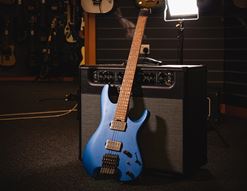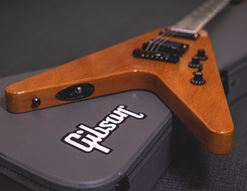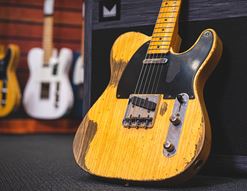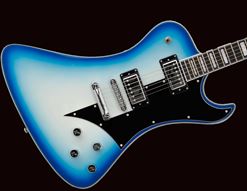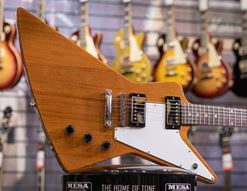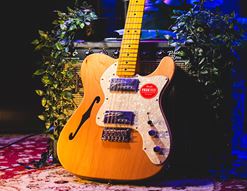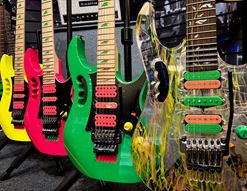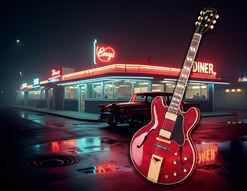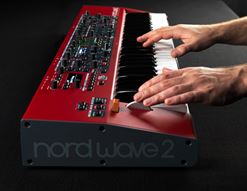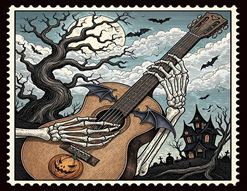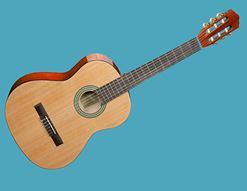Fender now have more different ranges of electric guitars and basses than ever before. As the largest guitar brand in the world, they are responsible for more classic guitar designs than any other maker. Their success is unparalleled, and they are currently offering Fender-branded instruments at almost every available price point.
This is great news if you are looking to buy a new Fender! I mean, who isn’t? We all have an eye open for our next guitar purchase, so if yours is hovering over Fender guitars, then this blog will be a useful thing to take in. I aim to separate all of the Fender guitar ranges and explain them in plain English to you, so that you can walk into your nearest guitarguitar store and be able to identify an American Professional II guitar from an American Vintage II in seconds flat!
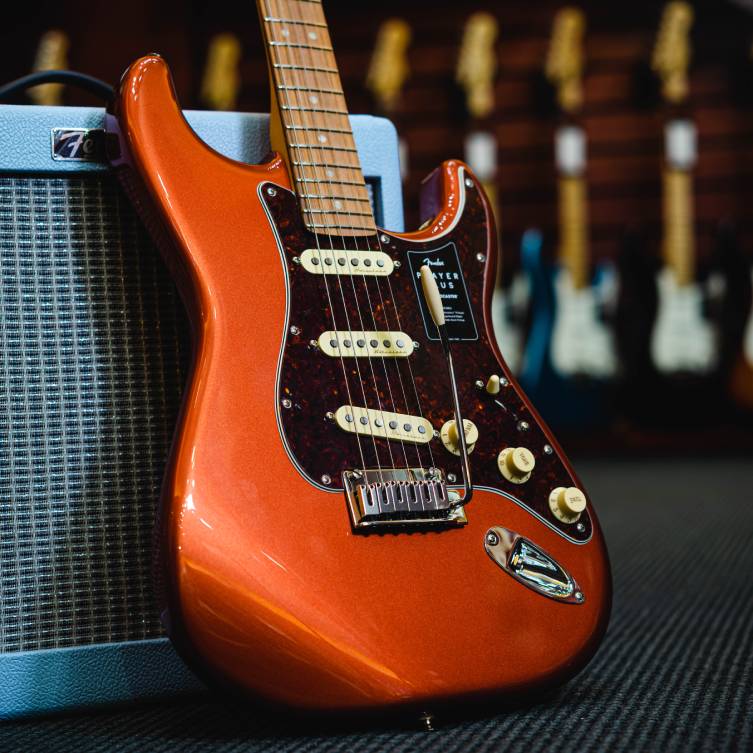
Fender Only
Since they build so many guitars, I’m sticking to Fender branded ranges only today. No Squier and no Custom Shop, because those are really full-on universes of their own. To keep things from becoming confusing, I’m going with all production model ranges of Fenders from the USA, Mexico and Indonesia.
Not only that, I’ll use the Stratocaster as a sort of example throughout the blog. Why? Well, it’s the guitar most extensively utilised by Fender, plus it’s the most that demonstrates changes from range to range in the best way, purely due to its somewhat more complicated design than, say, a Telecaster or a Precision bass. Many of the offset designs (Jazzmaster, Mustang etc) do not appear in every range, so if I stick (mainly) to the Strat, hopefully things will remain simple and clear.
Are you ready to become a Fender expert? Good, goood. This way!
Contents
Fender American Professional II
Artist Models, Limited Editions and FSR Models
Fender Standard Series
Let me begin with this brand new range, so it is also the most affordable collection of guitars that Fender offer. The Fender Standard Series is built in Indonesia and offers pretty impressive value for money. The guitars have poplar bodies and maple necks, and they utilise ceramic pickups.

For me, the poplar body isn’t much of an issue: Fender use Alder as their main wood, but it’s certainly not the only one they’ve made bodies with. Poplar does the job and is cheaper than alder.
The ceramic pickups are another economical choice, since they are considerably cheaper to produce. Do they sound good? Well, yes, but it depends on what you plan to play: overdriven and distorted sounds work very well, but clean tones perhaps lose a little of that famous Fender chime when compared with alnico pickups.
The Fender Standard Series has less models available than some other ranges, but the essentials are all present and correct:
- Stratocaster
- Stratocaster HSS (includes a bridge humbucker)
- Telecaster
- Precision Bass
- Jazz Bass
Despite being the most affordable range of Fender-branded guitars, the Standard Series are available in a range of quite upmarket-looking colours, including Candy Cola, Olympic White and Aqua Marine Metallic.
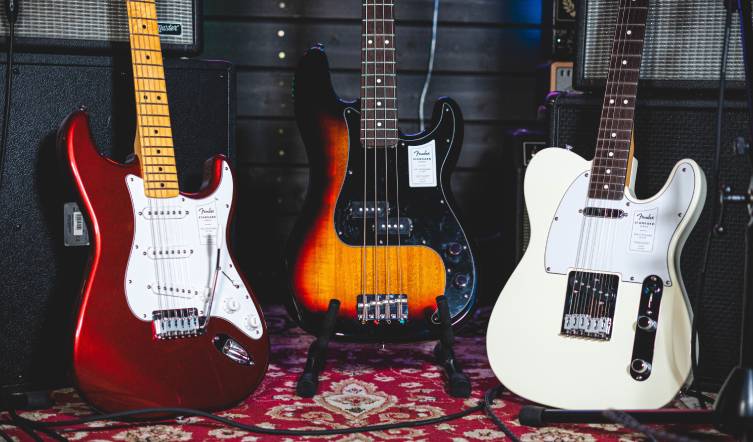
Who is the Fender Standard Series For?
This new range is really for any player who fancies a genuine Fender guitar at a good price. You could be any of the following:
- A new-ish player who wants a solid upgrade on a beginner guitar
- An experienced guitarist on a budget
- Someone looking for a great platform to modify and tinker on
- A guitarist looking for a good, affordable bass.
- A guitarist who prefers other brands but still wants a Fender in their collection
- Gigging players who don’t want to take an expensive instrument on tour
In short, there’s every reason to go for one of these, and hardly any not to!
Fender Player II
Prior to the release of the Standard Series, the Fender Player II range was the entry level point for Fender-branded guitars. Now, they are an upgrade from entry-level, but let’s be honest: they’ve never been entry level guitars!
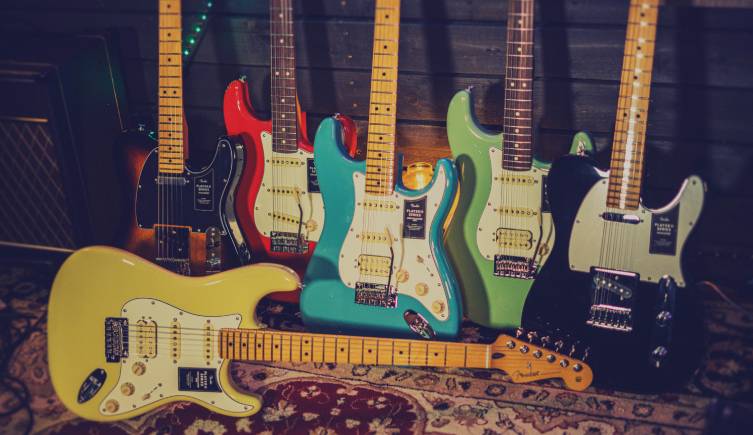
In my opinion, these Mexican-made guitars and basses punch far above their weight, and are worth consideration by all guitarists, no matter how experienced you may be.
Why? Easy. They sound fantastic. The alnico pickups make a real, obvious difference to the sound, to the point where I’d say they sound as good as more expensive Fender models. You be the judge, but I’ve played a LOT of these guitars and rate the Player II range very highly.
Anyway, here are the models in the range:
- Player II Stratocaster
- Player II Stratocaster HSS
- Player II Strat with Chambered Body
- Player II Telecaster
- Player II Telecaster HH
- Player II Telecaster with Chambered Body
- Player II Jazzmaster
- Player II Jaguar
- Player II Mustang
- Player II Precision Bass
- Player II Jazz Bass
- Player II Mustang Bass
So as you can see, there’s a bunch more choice here in terms of models, including the offsets that are beloved by lots of indie and alternative players.
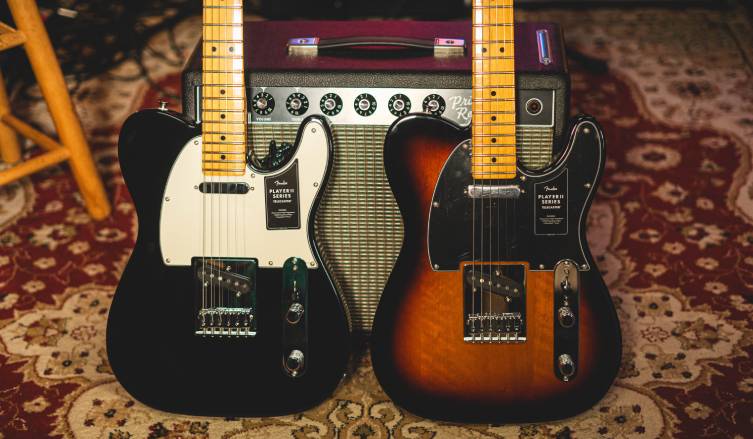
One thing I’d point out with the Player II range is that they are not designed to be ‘retro’ or ‘vintage’ in any particular way. For example, the Player II Jaguar is a great guitar, but it is a simplified take on what is normally a complicated guitar (Jaguars have dual circuits for lead & rhythm, and extra switches for tonal controls), and for some, those idiosyncracies are what make the guitar. Horses for courses!
You’ll also have noticed a Strat and a Tele with a chambered body. These are made from Ash (the regular models have Alder bodies) which is now a relatively scarce wood. It’s also very resonant, which you can really hear with certain sounds. I’ve never personally found Fenders to be too heavy, so the weight relief aspect isn’t something that resonates with me (sorry) but this may well be a factor for you.
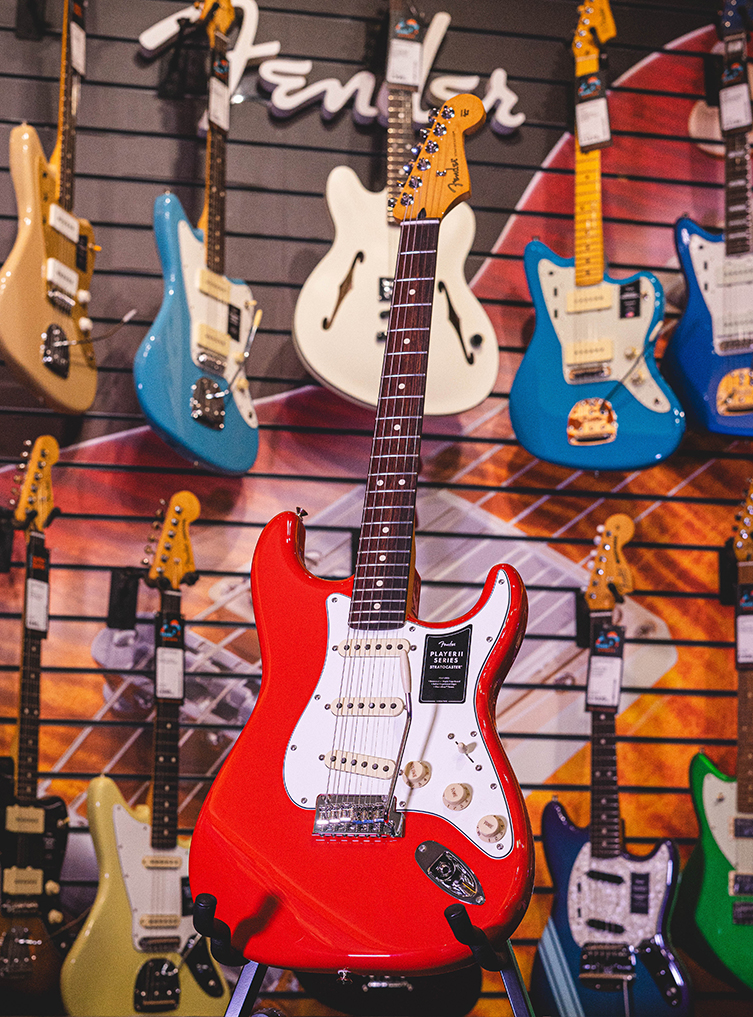
Who is the Player II Range For?
I see this buyer of a Fender Player II Series guitar as being somebody ready to step up to a quality guitar, but still being mindful of cost. They’ll have understood that the cost to performance ratio is high, and they are probably looking for a more contemporary guitar.
The Player II range are certainly good enough for gigging players, and for those looking for an affordable ‘main guitar’.
Players looking at the Standard Series should try out a comparable model from this range to see how they fare sonically. You may find that the differences are enough to warrant the extra spend.
Player Plus
The Fender Player Plus range adds some interesting details to certain models, along with different colours and a whole new model, the Meteora!
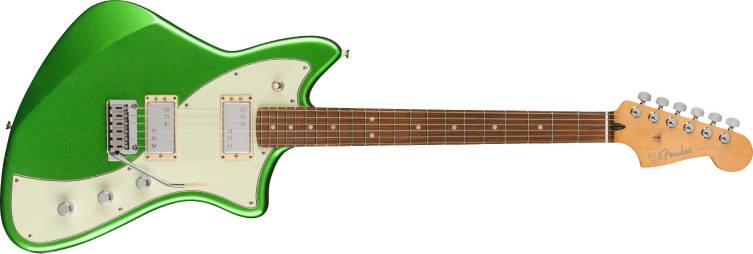
The first thing to notice is a set of Noiseless pickups. These are still chimney single coil units, only without the attendant hum that occurs when overdrive enters the mix! On top of that, major changes include locking tuners (quicker tuning, better stability), a flatter fingerboard (which promotes easier playing for most genres), additional switching (a push/pull which adds the neck pickup) and upgraded bridges.
The idea behind the Player Plus range is to include a number of the types of upgrades that lots of players would normally make throughout the instrument’s life. This gives the range a ‘semi-modded’ vibe that will appeal to those who like something a little different.
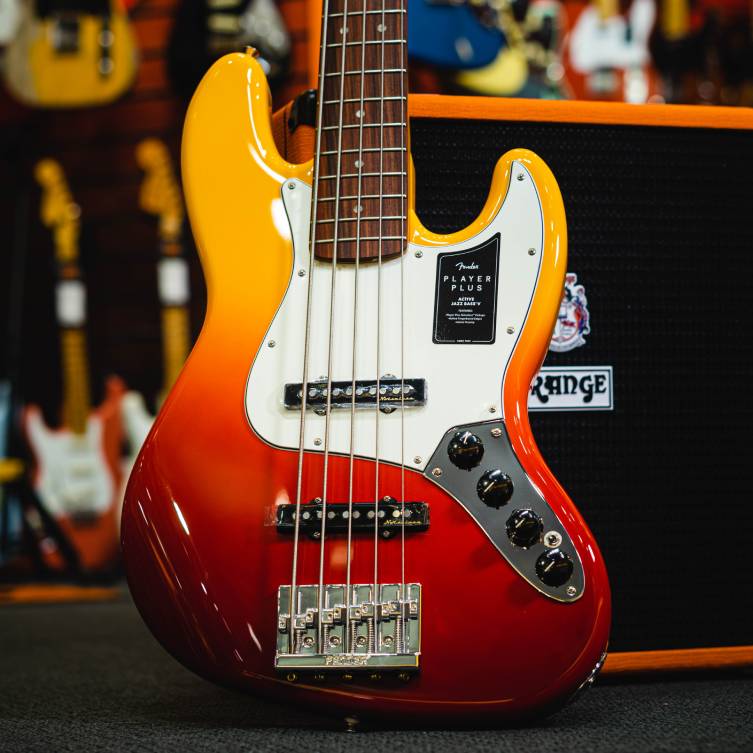
Here are the models:
- Player Plus Stratocaster
- Player Plus Stratocaster HSS
- Player Plus Telecaster
- Player Plus Nashville Telecaster (extra Noiseless Strat pickup in middle position)
- Meteora
- Meteora Bass (Active Fireball humbucking pickups with active EQ)
- Player Plus Active Precision Bass (Active pickups, one single coil and one split coil with active EQ)
- Player Plus Active Jazz Bass (Active pickups, one single coil and one split coil with active EQ)
Who is the Player Plus Range For?
The extra spend on a Player Plus guitar buys you upgrades that are greater than the cost of the individual upgrades, so the range is good value. It also has a different look to other Fenders, with mismatching pickups on some models (The Player Plus HSS Strat), extra pickups on others (Nashville Tele) and some finishes you won’t find on other Fender models, such as Tequila Sunrise.
In other words, if you like classic Fenders but want a little bit more performance along with a look that’s slightly left-of-centre, then the Player Plus range presents a very enticing proposition. They also come with gig bags!
Fender Vintera II
The Fender Vintera II Series is a Mexican-made line of instruments that focus on more vintage-era specs. Indeed, the name Vintera is made up from ‘vintage’ and ‘era’! Golden age decades such as the 50s and 60s are represented by guitars which are tailored to the styles of those years. For example, 50s Strats will have maple fingerboards and single-ply pickguards, whereas 60s versions will have rosewood boards and three-ply guards, just as historical models did.

Period details extend to vintage voiced pickups (more chime in the 50s, hotter in the 60s), accurate circuitry for the Jaguar, Jazzmaster & Mustang and also colours that are true to the age. Thus, your Vintera II 70s Mustang will come with competition stripes and the historically correct, anachronistic ‘Competition Burgundy’ finish name, even though it’s blue (it historically had a purple edge that faded).
In short, these guitars and basses look more vintage, feel more vintage (7.25” fingerboard radii with vintage tall frets abound) and sound more vintage. 50s Nocasters will have three bridge saddles (not the more modern six) and Strat bridges will have six pin points, not the more modern two-point.
Who is the Fender Vintera II Series For?
The Vintera II instruments are for players who value the authenticity and appeal of a more retro instrument. Feel is especially important, and so chunkier necks, more curved fingerboards and glossy neck finishes are all important draws here.

Vintera fans will want a vintage feel, and even a little bit of ‘fight’ in their guitars. Vintage specs definitely change how you play, and some people just love that time-honoured vibe.
These are the most affordable Fender guitars with vintage stylings and appointments. Guitarists looking for that old-time vibe at a sensible price will have a great time checking out the Vintera II line.
Fender American Performer
The Fender American Performer range is the most affordable group of American-made guitars and basses. There’s a vague 70s style to these (without them being directly referencing any vintage guitars specifically) in terms of logo style and the bigger headstock on the Strat. The finishes are relatively 70s too: lots of sunbursts, browns and cream pickups! Extra features on the Performer Series include Yosemite pickups, Greasebucket tone circuit and a gig bag.
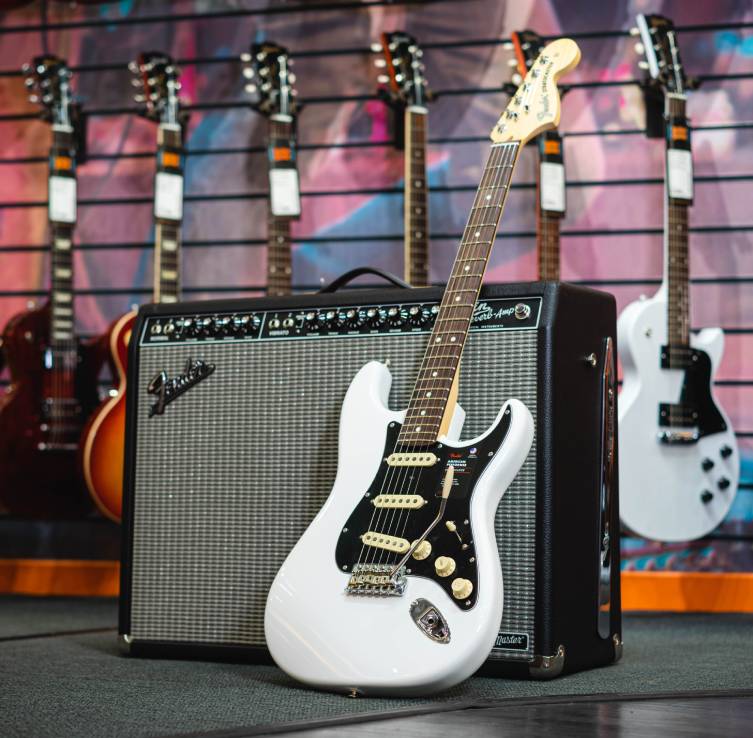
The selection of models is small but effective. Here’s the list:
- American Performer Stratocaster
- American Performer Stratocaster HSS
- American Performer Telecaster
- American Performer Mustang
- American Performer Jazzmaster
- American Performer Telecaster Hum (neck position humbucker, bridge single coil)
- American Performer Mustang Bass
- American Performer Precision Bass
- American Performer Jazz Bass
Who is the Fender American Performer Series For?
I see these guitars as being perfect gigging machines for busy working guitarists. They are quality, American made instruments filled with good hardware and pickups, made with classic looks and lots of player-friendly specs (satin c-shaped necks, jumbo frets). Players of all stripes will appreciate these guitars, but working players who don’t need overt decoration will probably appreciate this line of instruments the most.
Fender American Professional II
The Fender American Professional II Series is the flagship US-made line of instruments. These show the standard by which all other American made guitars are judged. Fender used to have a series called ‘American Standard’ and this is essentially the equivalent.
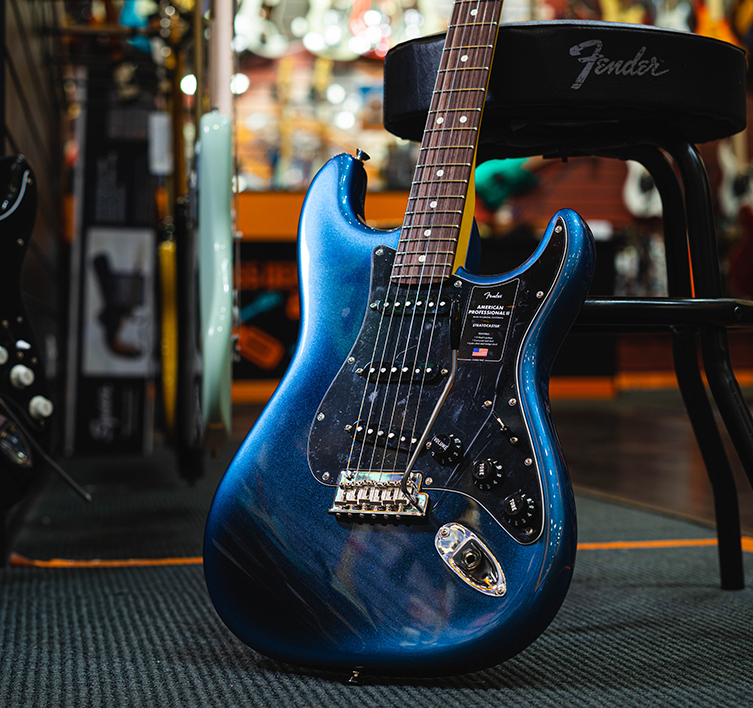
Built to high standards in California - with a high level of human handwork - these guitars are designed as professional pieces of equipment. As you’d expect, the range itself is relatively wide, with many of Fender’s historic designs included. Here’s a quick list for you, omitting limited edition guitars in favour of the core line:
- American Professional II Stratocaster
- American Professional II Stratocaster HSS
- American Professional II Telecaster
- American Professional II Telecaster Deluxe
- American Professional II Jazzmaster
- American Professional II Jazz Bass
- American Professional II Jazz Bass V (5 string)
- American Professional II Jazz Bass Fretless
- American Professional II Precision Bass
- American Professional II Precision Bass V (5 string)
This is the range that has the awesome Dark Night and Miami Blue finishes, the wonderful Deep C neck shape (more substantial than the Modern C shape used on the Mexican Player II Series) and the V-Mod pickups (or Double Tap humbucker if your guitar choice includes such a pickup) which are all individually developed for the guitar model AND designated position within the instrument.

It’s an impressive range for sure, and the one that I feel most guitarists will instantly get along with. There are no vintage specs here, so no potential compromises for ‘authenticity’. If your budget stretches to include American-made Fenders, then the American Professional II Series really has to be your first stop.
Who is the American Professional II Series For?
I’d say that this range is the first stop for any guitarist looking for an American Fender guitar. Whether a hobbyist or a pro, the quality is here, the features are here, and a bright rainbow of colour options are here, too.
The range looks ‘classic Fender’ enough for most people, and offers some modernity with certain colours. Importantly, there is a level of practicality that offers more to most players than the specifics of, say, the American Vintage II range. These are guitars and basses that are built to perform at a high level, consistently. LIke I said earlier, if you are looking to spend on an American guitar, this is where to begin!
American Vintage II
The Fender American Vintage II range can be thought of - roughly - as a US-made take on the Vintera II range (or the opposite way around, I suppose!), so we’re talking about historical reissues here. The main selling points here include nitrocellulose finishes (thin skin coats and lacquer that feel pleasant to the touch and age very beautifully), period-correct neck shapes and pickups, and all of the finer details applied too.

By this I mean that the 70s reissue models have ‘bullet’ truss rods, for example (you’ll see what I mean as soon as you look at such a guitar), the 1966 Jazzmaster has block fingerboard inlays and the 1951 Telecaster has three brass saddles in the bridge.
This level of historical authenticity is demanded by certain players who want a specific playing experience: they want things as they were done back in the day, and are well catered to by Fender, a company who knows its own heritage better than most.
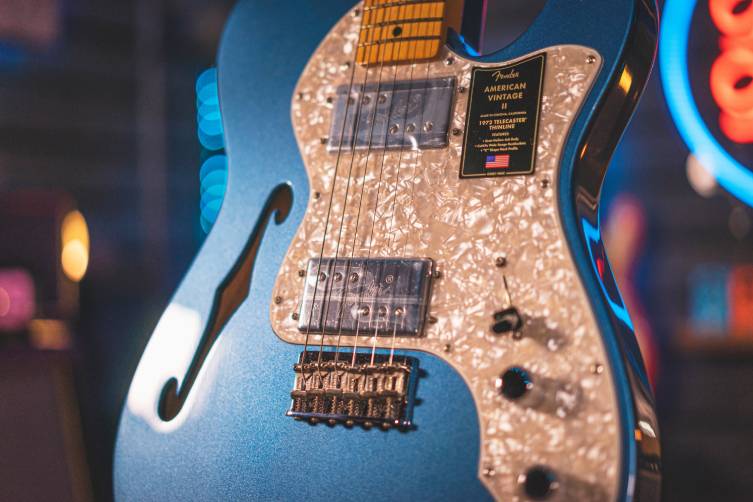
Finishes will all be correct to each period, as will things like fingerboard material (no rosewood on 50s models, for example) and headstock logos (and shapes!).
Here’s how the range runs:
- Fender American Vintage II 1957 Stratocaster
- Fender American Vintage II 1961 Stratocaster
- Fender American Vintage II 1965 Stratocaster
- Fender American Vintage II 1973 Stratocaster
- Fender American Vintage II 1951 Telecaster
- Fender American Vintage II 1963 Telecaster
- Fender American Vintage II 1972 Telecaster Thinline
- Fender American Vintage II 1975 Telecaster Deluxe
- Fender American Vintage II 1977 Telecaster Custom
- Fender American Vintage II 1966 Jazzmaster
- Fender American Vintage II 1954 Precision Bass
- Fender American Vintage II 1960 Precision Bass
- Fender American Vintage II 1966 Jazz Bass
So, you’ll find lots of 70s Teles with humbuckers, and once again, no Jaguars! There are no Mustangs either, but that’s probably shrewd on Fender’s part: most players who want a Mustang will either be happy to buy a more affordable Mexican model, or they’ll find genuine vintage examples on the used market for relatively reasonable outlay.

Who is the American Vintage II Series For?
I’d advise potential buyers to compare their favourite American Vintage II guitar with a comparable guitar from the American Professional II series. This is the easiest and quickest way to determine if you prefer a more modern or a more vintage feel. For example, fingerboard radii can really alter how your hand deals with note bends, and this can actually change your whole playing situation.
Similarly, an authentically low-powered 50s Strat pickup will deliver a ‘chime’ quite unlike that of a more modern-voiced pickup. There is no ‘better’, but if you are zeroing in on some specific vintage tones, it makes sense to go with the guitars that are built to meet those specifics.
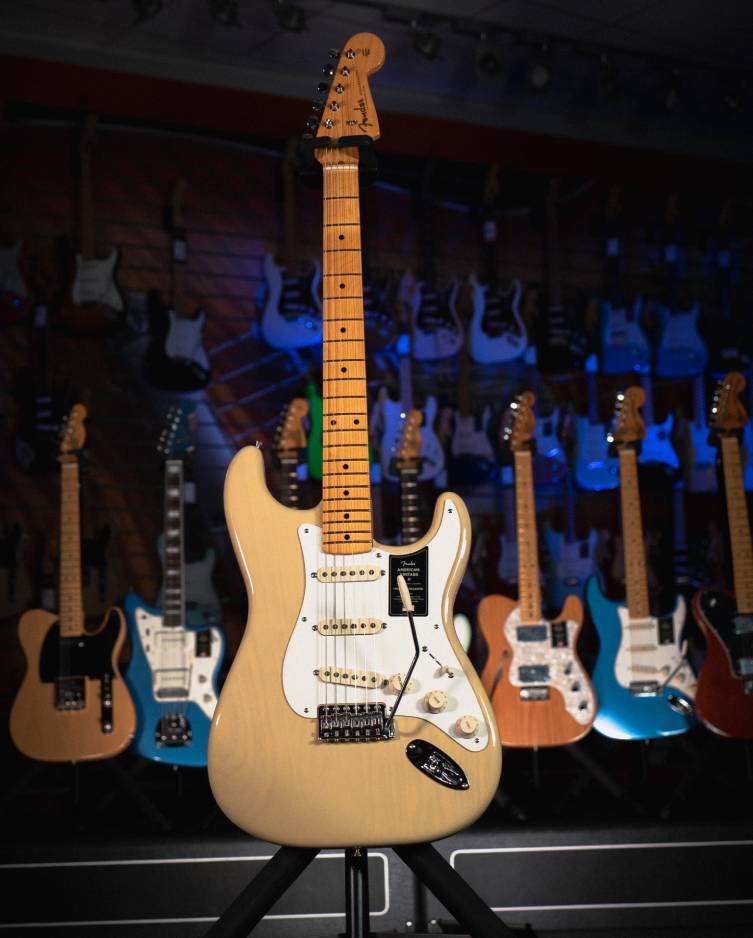
Looks are everything to some players (let’s not pretend otherwise!) and we all love the old-school style of classic-era Fenders. It’s maybe a subtle thing for casual guitar fans, but for those who are appropriately ‘Fender-pilled’, then these period correct finishes - including the nitro lacquer - are beautiful things to behold.
Some players prefer a chunkier neck, a glossy neck, a rounder fingerboard radius etc etc, so the American Vintage II Series is there for those players. If you know what you want, and you want it to be as authentic as possible without paying Fender Custom Shop prices, then this is the range for you!
Fender American Ultra II
The Fender American Ultra II series is all about modernity. The guitars all still adhere to the timeless Fender style, but everything is tweaked in order to deliver maximum performance. From the neck carves to the fret choice, the circuitry to the pickups and hardware, every variable has been taken into account and chosen for its high-permorance capability.
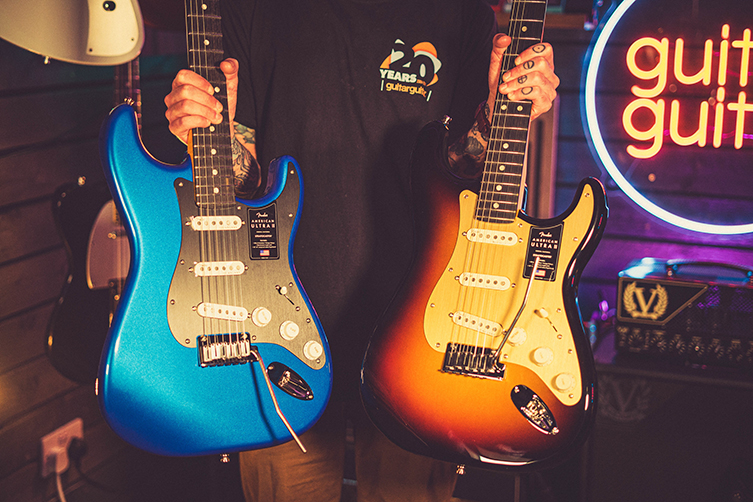
Let’s take that a little further. The Ultra II Stratocaster, for example, has an upgraded tremolo bridge that contains stainless steel saddles (it will take decades to wear), a cold-rolled steel block (dependable and full of sustain) and a pop-in arm, which most Strats do not have. On the surface, it's just another Strat bridge, but from a performance level, it’s a big step up. Such is the story with the Noiseless pickups, S-1 switching, locking tuners and more.
Here are the instruments included in the Ultra II series:
- American Ultra II Stratocaster
- American Ultra II Stratocaster HSS
- American Ultra II Telecaster
- American Ultra II Meteora
- American Ultra II Meteora Bass
- American Ultra II Jazz Bass
- American Ultra II Jazz Bass V
- American Ultra II Precision Bass
There’s an amazing range of modern colours available, including Noble Blue and Solar Flare. Other, less obvious changes are still notable with these instruments. Take the neck, for example. We’re looking at quartersawn maple (the timber is cut at an angle that promotes the most strength but is more wasteful hence more expensive) with a compound radius (the fingerboard flattens out the higher the frets get), rolled edges (nice for your hand, basically) and medium-jumbo frets, which promotes very smooth lead playing. These also have luminlay side position markers: luminlay glows in the dark, so you’ll see these little side dots on the darkest stages).
Also, you’ll have noticed the inclusion once again of the awesome Meteora, available here in both guitar and bass iterations. It’s too new to be a classic, but I feel that Fender have given us a legitimate new shape here that totally works as both a fresh design and a part of their ongoing ‘house style’, as it were. Check one out if you haven’t already!
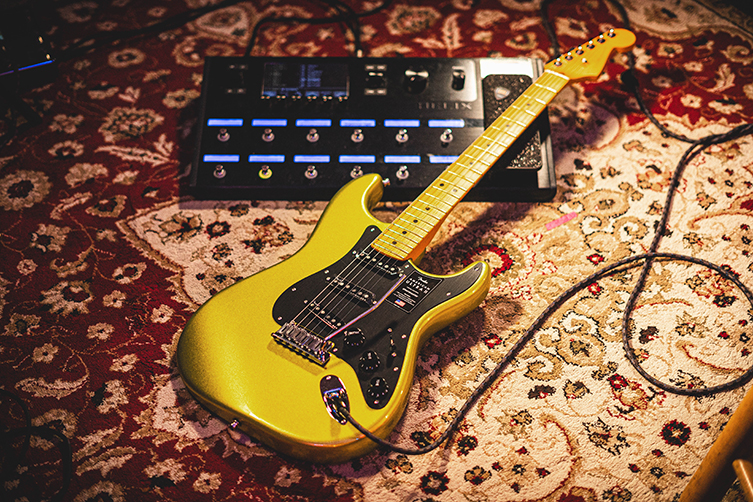
Who is the American Ultra II Series For?
I would say that players who gig often and need to cover lots of bases will enjoy the American Ultra II series. They are very player-centric and have an added ‘sheen’ with the contemporary look that will really pop on stage.
Similarly, players who like more technical or shreddy styles with love these, particularly if they want performance without also having the pointy headstocks and sharp edges of other performance brands. These Fenders will not look out of place in any band setup, but you’ll still have something that you can shred outrageously on!
Artist Models, Limited Editions and FSR Models
Aside from these main ranges, there exist a few instruments that do not as easily fit into a group. Here’s a quick word on some of these:
Artist Models: Artist Signature model guitars and basses have existed since the 1980s (Eric Clapton was the first, fact fans!) and are made in both the US and Mexico these days. From Yngwie Malmsteen to Jack White, there is a huge selection of artist-endorsed, very specific models available. Some are ‘catalogue’, meaning they are always available, and others are more limited.

FSR: This stands for Fender Special Run, and is a term used for guitar models that are offered with non-standard colours or hardware, in limited numbers. For example, a popular Fender FSR was the Player Strat we commissioned in Fiesta Red with gold hardware, as a sort of unofficial tribute to Shadows guitarist Hank Marvin. That’s the type of thing you often find with FSR editions, and they are generally spec’d by dealers, so they can be quite exclusive. It’s an exciting and unpredictable part of the market for sure!
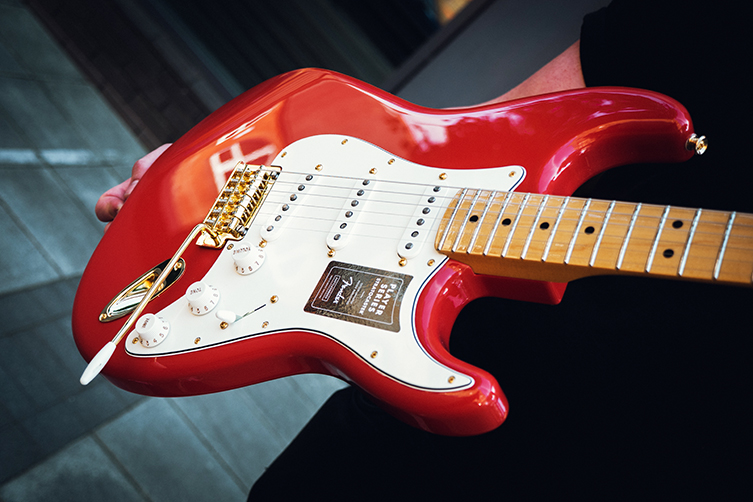
Limited Edition: Fender issue lots and lots of limited edition guitars, whether with different colours, hardware or both. The difference between these and FSR guitars is basically the fact that limited edition guitars are generally available to all dealers. Fender make them frequently, and you can find unusual combinations of features that might just be exactly what you’ve been wanting.
Variety is the Spice of Life
So, those were the main ranges that make up Fender’s electric guitar and bass catalogue. They all justify themselves pretty well, I think: there are reasons for each to exist, and the variety on offer seems sensible without sacrificing the essential ‘Fenderness’ of any particular guitar.
The good news is that there’s no such thing as a bad Fender guitar. Regardless of the budget you have available, you’ll be able to pick out a brand new Fender-branded instrument that’s based on an undeniably classic design, be it Stratocaster, Telecaster, Jazzmaster, Jazz bass or P-Bass.
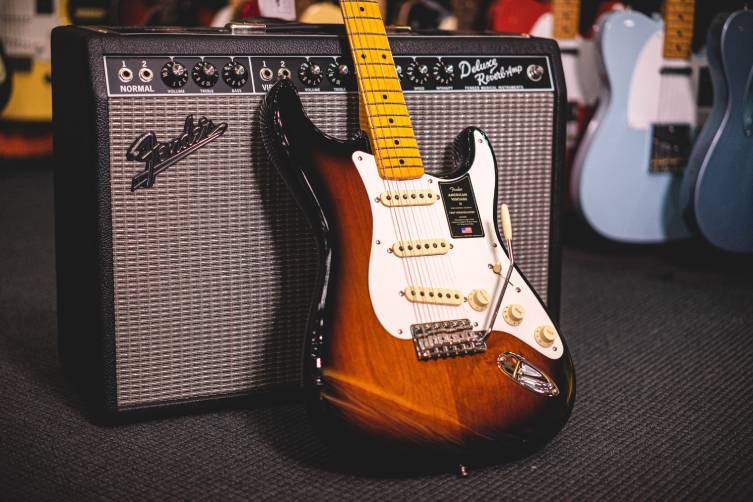
The only problem I can foresee is option paralysis. There are so many good Fenders to go for - particularly if you have the means to choose from all of the ranges - that you may find yourself overwhelmed by choice! THat of course is why this blog was created, so make sure you go through it all and discount the ranges that don’t apply to your needs: you’ll quickly narrow your focus to a handful of guitars.
From that point, it’s playing time! Either choose one from the site and buy online, or head to your nearest guitarguitar and test drive your curated short list. Either way, your next quality Fender guitar is just on the horizon!
Have fun!
Click to View Everything Fender




